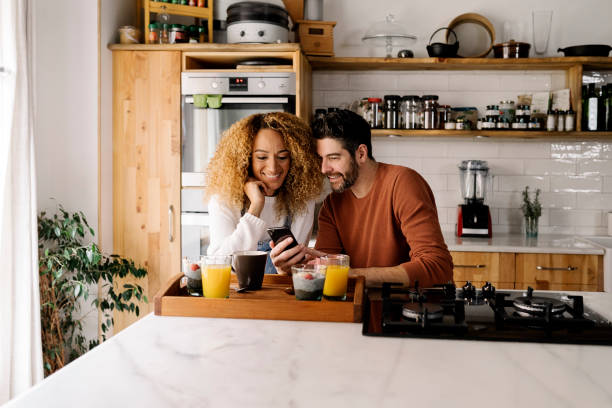
Heartbreak is an emotional tempest that can leave us feeling shattered and adrift. Whether the end of a romantic relationship, the loss of a friendship, or any other significant emotional rupture, the pain can be overwhelming. As we grapple with the aftermath of heartbreak, it’s crucial to recognize that healing is a gradual process unique to each individual. In this therapeutic journey, understanding the role of codependency becomes pivotal.
Every relationship is different and impacts us differently based on a number of factors. Someone we weren’t with for very long but who shared a critical part of our lives with us can feel like more of a loss than someone we spent a decade with. No matter what situation leads to your break-up, if you are in pain, then your pain is real and valid, and you deserve care in the aftermath so that you can move forward.
Codependency and Heartbreak

Codependency, often overlooked in the context of heartbreak, can exacerbate the pain and hinder the healing process. It refers to a dysfunctional, one-sided relationship where an individual excessively relies on another for their emotional well-being. In the aftermath of heartbreak, those with codependent tendencies may find it particularly challenging to disentangle their identity from the relationship that has ended. Recognizing and addressing codependency is a crucial first step toward healing.
3 Ways to Overcome Heartbreak
1) Get Rid of Triggers:

Triggers can range from sentimental items to digital reminders and even certain places or activities associated with the past. Begin by decluttering your physical space and removing items that hold emotional significance. This might mean putting everything in a box and tucking the box away; it doesn’t mean you have to throw everything in the trash the day after your break-up. Start by getting things out of sight if that’s the most you can handle at first. In the digital realm, consider unfollowing or muting your ex-partner on social media to create a healthy distance.
At first, everything will feel like a trigger. When you share a romantic bond with someone, that person can become so intertwined in your daily life that you don’t even realize all the ways they show up for you. Being heartbroken hurts. It’s exhausting. It’s an invisible wound that can genuinely cause physical symptoms of illness but can’t be seen by the people you encounter as you navigate your healing. Creating some space around yourself by getting rid of triggers will take time and patience with yourself.
You may discover that there are places that are triggered; perhaps your favorite place to go for dinner together or the spot where you first met. You can’t “get rid” of these places themselves, but you can work through how they trigger you. If possible, while in the early stages of healing, you may want to avoid them. Over time, you can utilize exposure therapy by walking or driving by. This is a great activity to recruit a friend for. If you want to be able to return to that restaurant again because you love their food, you can try ordering it for takeaway at first; then, you can go to the restaurant with someone you love and trust. Make new memories there! You might also opt to use your aversion to this place as an opportunity to try new spots and move on in that way. You have options and are welcome and encouraged to try them out, consider them, try again, reconsider, and so forth.
If you are struggling to get rid of your triggers, have a gentle talk with yourself about what it feels like to continue to live among them. “This causes me undue pain” and “I am creating a space that helps my peace of mind” are great reminders when you feel yourself resisting the process. Ask yourself: Is this item helping me move forward? Is it making me feel better? Does it align with my needs; am I showing myself care by keeping it around? Remember that there will be a future time when it doesn’t harm you to wear your favorite T-shirt from the concert you went to with your ex. In order to get there, you have to move forward. You can’t do that when wearing an item that holds you back or makes you sad.
2) Make New Memories:

Engage in activities that bring joy and fulfillment, whether it’s pursuing a hobby, exploring new places, or spending quality time with friends. By immersing yourself in new experiences, you not only distract your mind from the pain but also foster a sense of independence and self-discovery. As with anything that is painful, a great way to minimize that pain is to surround it with other emotions. Think of your pain as a toy block. When you stack other toy blocks around it, laying them all out on the table in front of you, they form a tapestry of shapes and colors. Your original block doesn’t get any smaller, but in comparison to the entire surface of block faces, it seems pretty small. Collectively, the rest of the blocks reduce the perception of the size of that one block. Pain is the same. If you join it with other pain, the pain seems enormous. If, instead, you build happiness around it, it doesn’t seem so bad.
That is easier said than done, but you can start small. The pain will come with you; you may see a new place and wish your former partner was there to experience it with you. These responses are bound to occur. Being mindful means acknowledging the thought, taking a deep breath, and moving forward. “Yes, it’s a shame not to share this with them. I am grateful to see it for myself.” Or, if you are there with a friend, you might remind yourself that it is lovely to make new memories with a loved one.
You may have envisioned future times you would share with your partner or planned (to various extents) trips you would take, films you would watch, and activities you would participate in together. The idea of these things might feel “wrong” at first. Remember that you are deserving of every experience you want to have. You have the right to know and believe that the magic in your activities and memories is you. You are capable of having fun without your partner. Part of making new memories is treating yourself to happiness. This teaches you that you are deserving of fun and special things, whether you go with someone you care about or on your own. Self-love is a self-fulfilling prophecy. You try something new, and it enriches your life. From there, you move forward with a feeling of abundance and confidence, which helps you to try something new, and so on. You may have let your self-love muscles get a little weak in your time partnered up. That’s understandable. It’s nice to feel “chosen” by someone and to let that knowledge create a little cocoon of self-respect, self-belief, and self-esteem. Stepping out on your own and making new memories helps to reinforce that you love yourself all on your own.
Making new memories is a great opportunity to reconnect with loved ones who may have fallen by the wayside when you were wrapped up in your relationship. Somehow, the people who have been with us all along are often the ones we take most for granted. This is a great time to remind yourself that those who love you unconditionally deserve your care and consideration. How can you invest in them going forward? Where can you find space in your life to show them that they matter to you? Making new memories together might include signing up for an ongoing class; committing to spending time with someone can go a long way to solidifying your friendship and expressing your appreciation for that relationship.
As you make new memories, whether on your own or with others, check in with yourself. Remember that this time of healing is also preceding your future. Do you enjoy spending time with a variety of people? Do you enjoy doing certain things on your own? How will this new understanding of yourself help you to create the life you want going forward? If you were to connect to someone again, which parts of your current lifestyle would you need to retain in order to feel satisfied with your life?
3) Spend Time with Yourself:

Amidst the noise of daily life, it’s easy to lose touch with oneself. Heartbreak offers a unique opportunity for introspection and self-discovery. Embrace solitude and spend quality time with yourself to understand your needs, desires, and aspirations. Engage in activities that nurture your well-being, such as journaling, meditation, or pursuing personal goals. Reconnecting with your identity lays the foundation for genuine self-love and resilience, fortifying you against the aftershocks of heartbreak.
If you found yourself in a codependent dynamic in your relationship, spending time alone may feel particularly daunting. You may seek codependency treatment through therapy for codependency to help you address the mindset that led to codependence and adjust behaviors so that you can move away from it.
The ability to be alone is one of the greatest skills for freedom a person can have. This doesn’t mean you don’t desire and enjoy the company of others. In fact, when you choose the people you spend time with because you like them and not because you need someone around, your life is enriched by the folks who surround you. You can feel comfort in knowing that you can have a good time on your own and with the community you have cultivated and invested in.
Spending time with yourself can look like staying in the evening instead of making plans. It can look like going for walks, participating in a hobby like making art, or writing. It can look like reading a book you’ve been meaning to get to. If you’ve lived with other people all your life and are living on your own for the first time, spending time with yourself is also about creating a daily routine that works for you and keeping up your self-care even if no one is there to see it. This means you make dinner for yourself instead of skipping a meal because you’re not sharing it with someone. It means you do the dishes afterward because you deserve to live in an organized space.
Spending time by yourself also looks like taking yourself to the cinema (yes, you can go by yourself to see a movie!), taking yourself to a museum or gallery, or going alone to dinner. It’s not about deciding you don’t want company; it’s about learning that you don’t need to wait on other people to do what you want to do. You might realize you don’t miss small talk questions about how the other person felt after the movie. You might realize you don’t enjoy eating at a restaurant without someone to chat with between bites. It’s okay to prefer company for some things and to learn that you enjoy being solo for others. And as time goes on, it’s okay to change your mind! The process is about learning that you don’t need to be held back from doing what you want to do, pursuing your goals and dreams, and enjoying yourself just because you’re on your own (provided it’s safe to do so). Being confident to explore new things or have new experiences on your own is truly liberating. That kind of independence can’t be bought; there is no shortcut to get you there. It is earned by believing in yourself enough to take small chances to make first strides.

Healing from a break-up is a process. There will be harder days than others; you may experience something you wish you could share with your ex, see them holding hands with their new partner for the first time, or find an item of theirs in your car. Or you may wake up some days missing them for no “logical” reason at all. What is important to keep in mind in these times is that nothing in life improves in a straight line. What seems straightforward one day may be confusing and painful the next, and vice versa. The way you stay strong and continue to move through your healing is to know your boundaries, continue to show yourself love and care, and have patience. Keep people around you who see and love you for who you really are. Speak to yourself the way they speak to you. Build a life and routine that brings you happiness when you’re doing it solo; don’t expect it to be perfect or for your happiness to be constant. When times are hard, don’t tell yourself a story that things would be easier if you were still with your ex. Remind yourself of the story of who you are and how you show up for yourself!
Therapy for Codependency in Woodland Hills
People-pleasing and codependency can take many forms and show up in any area of your life. While most often we see it in our romantic relationships, it tends to originate from our childhood based on family relationships. Ultimately, when you are struggling with codependency, it shows up at work and with friends. When you seek Codependency Therapy, you will learn to unpack all the life events and previous relationships that shaped your codependency AND learn healthier ways to connect, communicate, and set boundaries with others. Ultimately, in therapy, you will recover and repair the love you have for yourself so as to have strong self-esteem and self-acceptance.
Contact us today for your complimentary 20-minute phone consultation with our Admin Team today!




